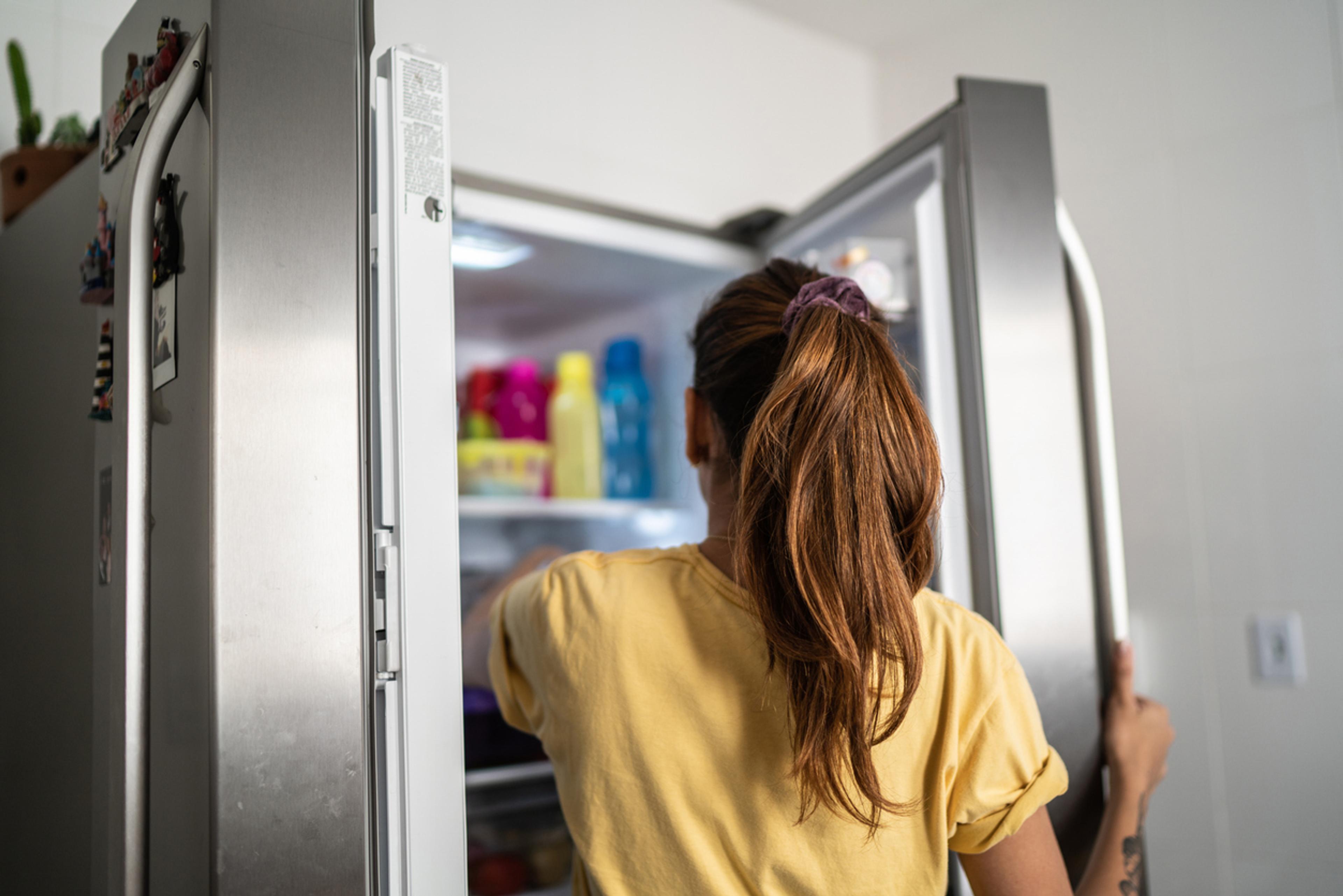


In the world of mental health care, virtual treatment options have emerged as a game-changing approach, especially for eating disorders like binge eating disorder (BED). Binge eating disorder is the most common eating disorder in the United States, affecting 3% of people across all age groups, genders, and backgrounds. Binge eating disorder is not a matter of willpower: it’s a serious mental illness that requires professional treatment. Traditionally, there have been many barriers—logistical, geographical, financial, and otherwise—to receiving BED treatment, but with the advent of telehealth, many of those barriers are coming down. Read on to learn more about virtual binge eating disorder treatment, what it looks like, and how to access it.
What to expect from virtual treatment for binge eating disorder
Binge eating disorder is an eating disorder characterized by recurrent episodes of binge eating, or consuming large amounts of food rapidly with a feeling of being out of control. Unlike bulimia, which also involves binge eating, BED typically doesn’t involve compensatory “purging” behaviors, like vomiting or laxative abuse.
Whether you seek in-person or virtual treatment, BED treatment will have the same goals: to stop disordered behaviors, establish regular eating patterns, and address any of the underlying emotional or psychological issues that are contributing to the eating disorder. If your disordered eating habits have led to nutritional deficiencies or other medical issues, those will also be addressed in treatment, whether it’s virtual or in-person.
During virtual treatment for binge eating disorder, you’ll get all your treatment through a computer, tablet, or phone, and can access treatment wherever you are. This allows you to fit treatment into your life, not the other way around, and means you don’t have to press pause on work, school, or other important parts of your life.
The specifics of treatment will look different depending on the program you choose, but a virtual treatment program will often include virtual therapy sessions, support groups, and nutritional guidance. It brings your provider team of specialists into your home, letting you get compassionate and tailored care in an accessible and convenient way.
Some components of virtual treatment for binge eating disorder include:
- Therapy sessions: You’ll meet virtually with a licensed therapist who specializes in treating eating disorders and has experience working with patients with BED. Your therapist will help you identify triggers for your disordered behaviors and develop healthier coping skills, as well as address underlying emotional and psychological factors contributing to your eating disorder. They can also help you improve complex relationships in your life, work toward improving body image, and address any feelings of shame or guilt caused by your eating disorder.
- Support groups. Eating disorders can feel very isolating, so connecting with others who know what you’re going through often makes a world of difference. Virtual support groups allow you to share your feelings and challenges with other people on the road to recovery, who can offer a listening ear, empathy, and understanding. This connection can ease any loneliness you feel on the road to recovery, as well as provide motivation and inspiration to keep going. The beauty of virtual treatment is that it can erase geographic boundaries and help to create a wider community.
- Nutritional guidance. One of the biggest parts of binge eating disorder treatment is normalizing eating habits. It’s essential to do this with the help of a registered dietitian who is experienced in treating eating disorders. Your dietitian will help you build a reliable approach to eating that works with your lifestyle, needs, and preferences, and provide accountability and support to stick to that plan. You may even eat meals “together” over the screen, or they can virtually coach you through preparing food in your own kitchen. Dietitians can also help you better understand your body’s nutritional needs and tune into hunger and fullness cues.
Getting started with virtual binge eating disorder treatment
If you’re struggling with binge eating disorder, don’t try to white knuckle it through recovery on your own, and don’t wait until you feel “sick enough” to deserve treatment. Every eating disorder requires treatment, and the sooner you get help, the sooner you can begin living a full, free life in recovery. And the best part about virtual binge eating disorder treatment is that you can usually get started right away (at Equip, there is never a waitlist).
Here’s how to get started with virtual binge eating disorder treatment:
- Find a provider. You can start by searching for a mental health provider or treatment program that offers virtual binge eating disorder treatment. Many individual providers offer virtual sessions these days, but we always recommend going with a treatment program that offers a multidisciplinary approach where team members collaborate. At Equip, you’ll be matched with a five-person team who all have experience treating binge eating disorder.
- Check insurance coverage. It’s important to check with your insurance provider to see if virtual binge eating disorder treatment is covered under your plan. Many insurance plans now include telehealth services in their coverage; however, it’s always smart to double-check. Equip is in-network with most major insurance providers in the U.S.
- Schedule a consultation. Once you’ve found a potential provider or program, you should schedule a consultation. A consultation will give you the chance to ask questions, get familiar with their online platform, and see if the program is right for you.
- Prepare for your sessions. After you have your consultation and select a program, you’ll want to get ready for your virtual treatment sessions. You’ll want to find a quiet, comfortable place where you won’t be disturbed. Make sure you confirm that your device’s camera and microphone are working properly and that your WiFi is fast enough to handle a video call.
- Enlist friends and family. While it’s not essential to bring loved ones into treatment, it can make the process easier and make recovery more sustainable. Integrating loved ones into treatment allows them to become educated about binge eating disorder so that they can better support you outside of treatment, and also helps combat any of the isolation or disconnectedness caused by and contributing to your eating disorder.
Benefits of virtual binge eating disorder treatment
Research has shown virtual treatment to be just as effective as in-person treatment for patients with eating disorders. Virtual treatment also offers some unique benefits over traditional models, including:
- Convenience: Virtual treatment spares you the headache of battling traffic, finding parking, and spending time commuting to and from appointments. It brings care to your doorstep, saving you time and energy. It allows you to schedule sessions around your life, not vice versa.
- Comfort: Feeling comfortable is essential to have productive sessions with providers. Virtual treatment allows you to feel safe and at ease in your home, which can make it easier for you to open up.
- Privacy: Privacy is important to a lot of people seeking eating disorder treatment. Virtual care allows you to do all of your treatment in the private and secure setting of your own home. While there’s no shame in seeking care—it’s a sign of strength, not weakness—virtual treatment can be very discreet for people who want their recovery journey to go unnoticed.
- Access to specialists: Many people struggling with eating disorders live hundreds of miles from the closest eating disorder specialist. But with virtual treatment, geographic barriers like this no longer have to prevent someone from getting help. Virtual binge eating disorder treatment means you’re not limited to who is nearby, and can work with highly qualified specialists across the country.
- Personalization. Eating disorders treatment isn’t one-size-fits-all, and when you meet individually with providers in a virtual setting, it allows treatment to be truly tailored to you. At Equip, we provide an individualized approach to all patients, tailoring your treatment plan to meet your exact needs and your support system. We treat you as a whole person, not as a diagnosis or particular symptoms.
Virtual binge eating disorder treatment brings care right into your living room, allowing you to recover at home alongside a supportive team of eating disorder experts. If you seek virtual binge eating disorder at Equip, you’ll be matched with a dedicated team that includes a medical provider, dietitian, therapist, peer mentor (someone who has recovered from an eating disorder themselves), and family mentor (someone who has helped a loved one through recovery, who can support your friends and family). Our treatment is evidence-based and proven to work.
Get in touch with our team today for more information about virtual binge eating disorder at Equip, or to schedule a consultation.
- “Binge Eating Disorder.” Cleveland Clinic, my.clevelandclinic.org/health/diseases/17652-binge-eating-disorder. Accessed 11 Dec. 2023.
- Penwell, Taylor E et al. “Traditional versus virtual partial hospital programme for eating disorders: Feasibility and preliminary comparison of effects.” European eating disorders review : the journal of the Eating Disorders Association vol. 32,2 (2024): 163-178. doi:10.1002/erv.3031







